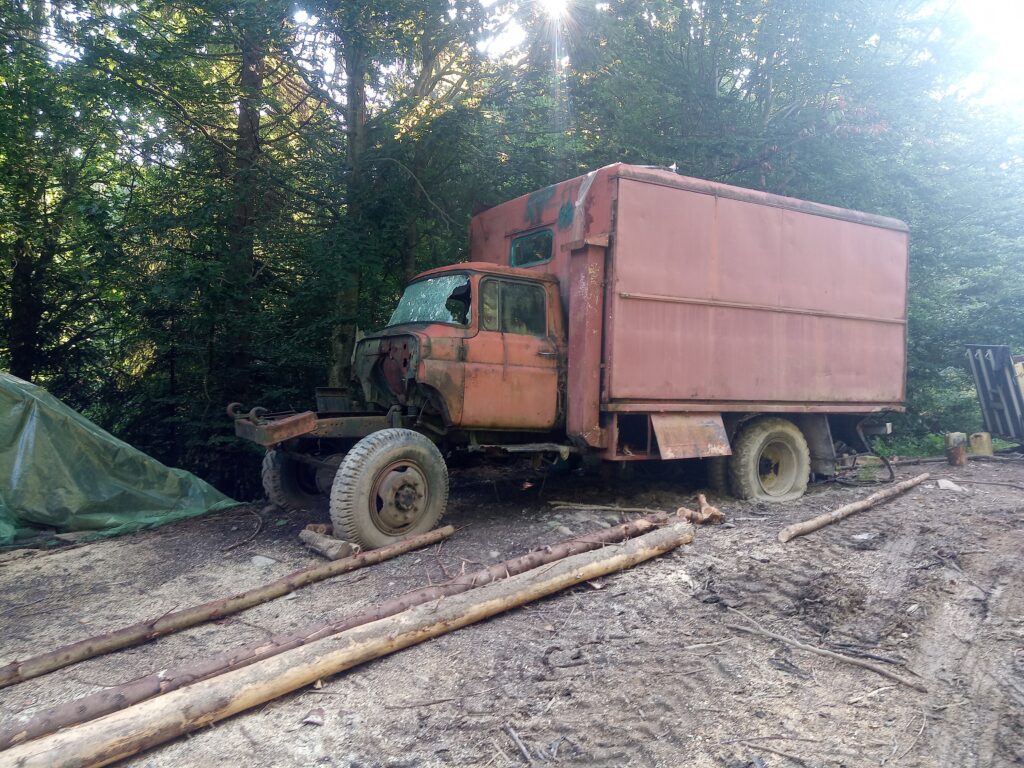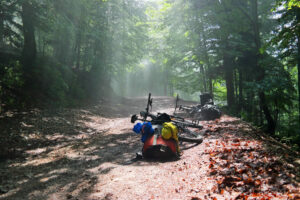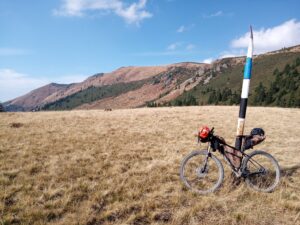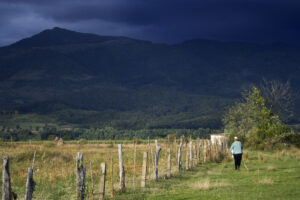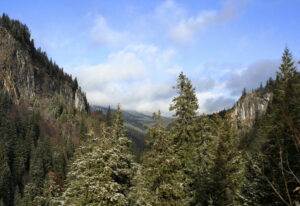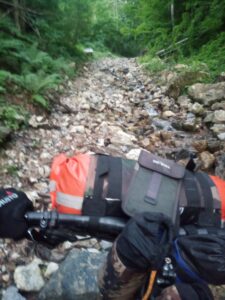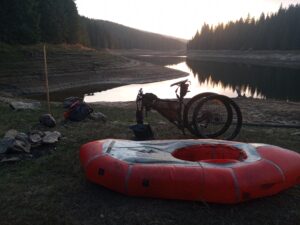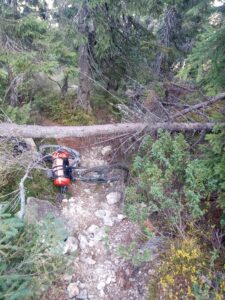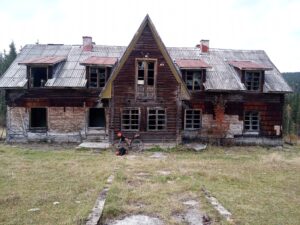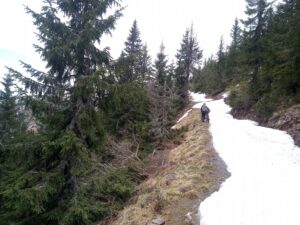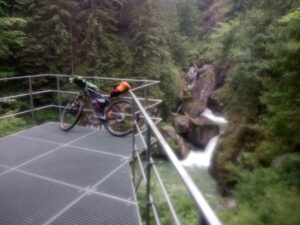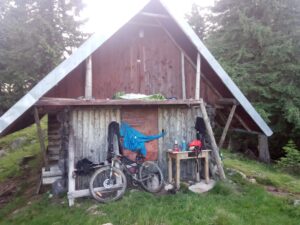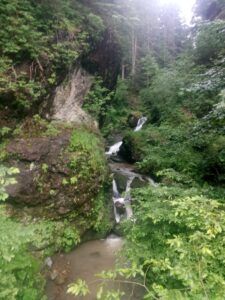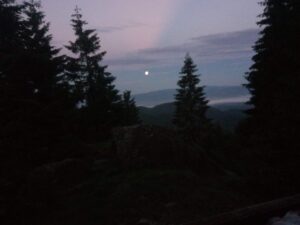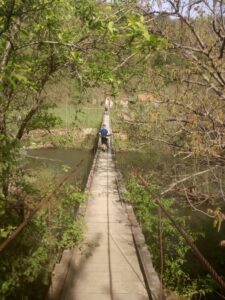Nincsenek termékek a kosárban.
When it comes to bikepacking tour destinations, Transylvania is undeservedly rarely mentioned, even though anyone who has cycled through any of this country with a thousand faces knows that it is an unparalleled experience.
I often hear the many shepherd dogs and bears, or the chaotic conditions on the public roads, as objections. I don't think the situation is terrible from any point of view, the dogs are big, the bears are even bigger, the trucks are the same as at home. However, if you want, you can even not meet anyone for days - and this is an irreplaceable advantage. I have been visiting this region for a long time, it has almost become my second home - although as soon as I see the Bihari mountains, it immediately feels like my first.
For us, from the eastern half of the country, the Bihar mountains are a gift, but if you want to skip the boring parts, you can take a train from Budapest to Debrecen, or even to Nagyvára.
In any case, the Révi strait can be suitable as a first bicaj station, at the bottom of which the Sebes Körös meanders, cutting a narrow path between the rocks. On the right bank, in some places, you can only ride on the path that leads along the tracks, which is not really a path, the gravel is a bit strong. You can go through the shorter railway tunnel, but I don't recommend the longer ones, they are very narrow and really long.
The gorge itself is a great experience, but if you have time, it is worth jumping into the Zichy stalactite cave on the other side.
When you get out of the gorge, part of the road is asphalt, but you can quickly deviate from this if you turn towards Körösponor at Barátka, and then at Munteni the road will be asphalt again. Be careful, the slope from Körösponor is magnificent. The next village is Jádremete, where you can go in two directions. To the left, you can climb up to the Dragan valley reservoir, every meter is worth it, both the dam and the reservoir are monumental. From the dam, the road follows the bed of the reservoir, it is also worth looking around from the concrete pylons hanging in some places, and even - since it is further inland from the road - it is not a problem to spend the night here, if it gets dark. From there, almost a single road leads up to Biharfüred, while you can take a detour of a couple of kilometers to see the Ördögmalom waterfall. It's not worth carrying the bike, it's better to put it away (albeit from whom?) by the side of the road somewhere. The next stop on our journey is Biharfüred, the only attraction of which is the slightly kitschy rock staircase of the Csodaforrás – actually the Jád stream. It will do for a bivouac anyway.
If at Jádremete we decide not to go down towards the Dragan to the left, we can continue straight towards Lake Lesi. The end will be the same, we will reach Biharfüred, only going through the Jád valley. The valley is beautiful, full of waterfalls, gently rising, real gravel that can be rolled easily. If you can, time it so that you go on this road by moonlight, at night, without lights. Unconscious.
The ridge above the Pádis Plateau is actually what we came here for. Once you're up there, you can really enjoy it. There can be a lot of sheep, and dogs are friendly, although opinions are strongly divided about the latter. Here, near the ridge, you can find several good bivouac sites, abandoned shelters, and shelters. The weather can change suddenly, we are around 1600 meters. We can go all the way to the top of Vigyázó, but we can also go down to the plateau. The way down is quite rocky, it shakes the soul, and not just plain rocky, but the roller kind. From here we are back in the thick of things, we have reached the Pádis plateau, which is famous for the fact that perhaps there is no other place in Europe where we can marvel at so many spectacular karst phenomena in such a small area. Most of them (Szamos bazaar, Csodavár, Galbena gorge) can also be reached by bike, but the last kilometers can no longer be carried, they are mostly paved roads. At Csodavár, on the Glavoj meadow, you can ask one of the bodegas to look after the keros, that sight is not to be missed. Of course not the rest.
Accommodation is easy to find, there are plenty of campsites and guesthouses in the area, but you can camp almost anywhere. In any case, it is worth dedicating several days to this region, even if it sometimes involves a walking tour. If we get bored and want to move on, there are many options to choose from. From Pádis we can trickle down to Cluj, although why would we do that - it's true that the road was beautiful until now, now they are paving this side.
My favorite is the road leading to the Galbena Gorge, mostly because it is a stunning sight, easy to ride, although we have to lose a good 700 meters to its entrance, rolling in the direction of Pietroasa. Of course, we quickly climb this back in the valley of the Galbena stream. The most spectacular is the upper part of the road, where we drive along hanging rock walls, high above the water. At the second bridge, it is worth jumping on the chains at least as far as the Eminenciás waterfall.
Leaving the gorge behind us, we cross a pleasantly rising forest road to Aranyos, in the valley of the Aranyos stream. On the way, the porch of an old forest house is also great for bivouacs, if we could stop by.
The most obvious thing to do from Aranyos is to climb Nagy Bihar, which is the highest point of the island mountain range, at over 1,800 meters.
The other option is to head towards the Torockó Mountains, although this is an asphalt road all the way, but it is moderately busy. On the way, we can detour towards the not-so-pretty memory Verespatak to walk through the old town, quite a few old miners' houses have been renovated. In the vicinity, we can even go as far as the basalt organ of the Detunátás, but that is already the Torockó Mountains, and this post is about Bihar.
Starting from Pádis in the direction of Cluj, we can take a right-hand turn to the Szkerisóra ice cave - it is the largest ice cave in Transylvania and can be visited.
We are not close to the end of the many natural attractions, it is worth reading up on the area and setting off. Be prepared for sometimes terribly muddy, clayey, impassable roads. Especially where logging is taking place. Water is everywhere if you go with a water bottle with a filter. The people are friendly, they don't speak Hungarian in secluded places, with one or two exceptions. If you at least learn to say hello, thank you, and say goodbye in Romanian, everyone will already be extremely helpful. It's better to calm the dogs down than to bark at them - I always liked them, there was one that spent half a day hiking through ditches and bushes with me. Bears are rare in Bihar and fear humans.
A bit of bike rafting can be extra - although I think few of us practice this in our country. In this region, you can also raft the Sebes Körös and the Aranyos, if the water level is good. Köves Körös is a bit strong with a boat full of bicaj :)
I hope I managed to make you want to visit the Bihari Mountains, if you are planning a trip here, I will be happy to help with advice.

